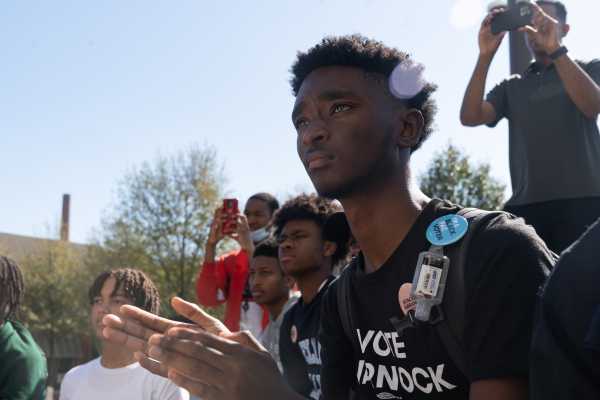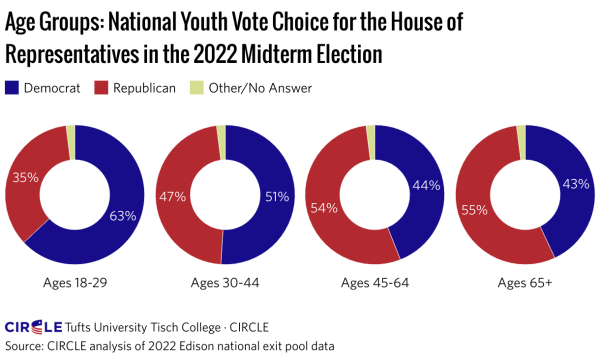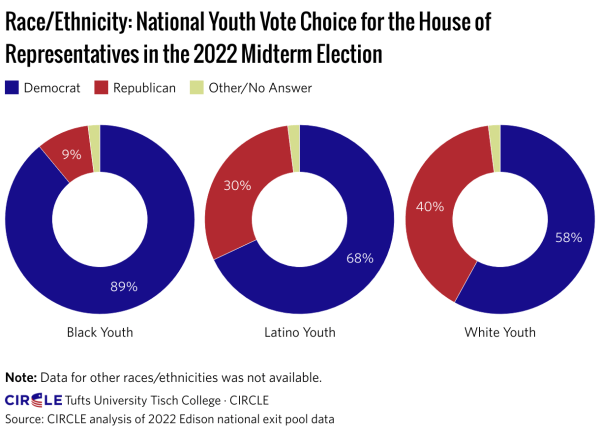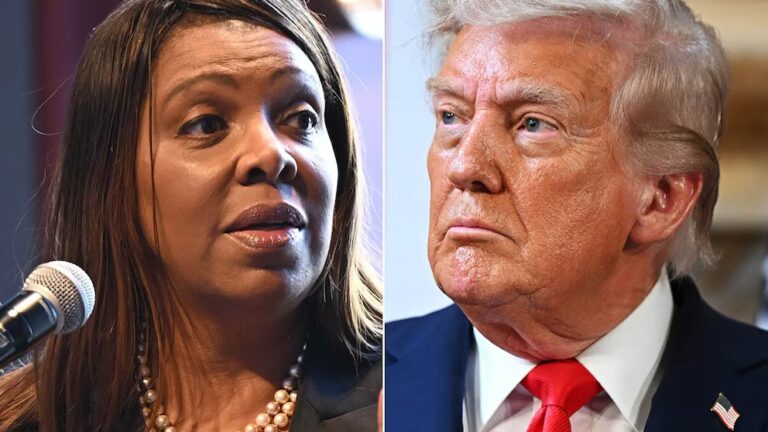
Part of The 2022 midterm elections, explained
When President Joe Biden touted the Democrats’ better-than-expected performance in the midterms, he had a special shout-out for young voters: “I especially want to thank the young people of this nation, who I’m told — I haven’t seen the numbers — voted in historic numbers again,” Biden said, “just as they did two years ago.”
He wasn’t alone. Other Democrats have praised young voters for helping the party avoid being crushed by a “red wave.”
With votes still being counted in multiple states, and reliable voter data weeks if not months away from being available, it’s too early to say definitively what role Gen Z and young millennials played in the midterms. Without more solid data to go on, pollsters and pundits are already in disagreement with one another over what to make of the limited data we do have.
Early analysis based on exit polling suggests that voters ages 18-29 didn’t turn out in the same numbers they did in the 2018 midterms, when they voted at levels not seen since the 1980s. That’s led some political observers to reject the idea that young voters may have swayed this election. But when considered in context with recent election cycles, a clearer picture of young voters’ habits is starting to emerge: Young people, when they turn out, seem to strongly favor Democrats — making them a decisive voting bloc that can determine who wins in key races across the country.
In some of the most important races this cycle, young voters’ support for Democrats might have helped provide the edge the party needed to win, according to an analysis from CIRCLE, the Center for Information & Research on Civic Learning and Engagement at Tufts University, which studies the voting behavior and beliefs of young voters.
In the Pennsylvania Senate race, for example, Democratic Lt. Gov. John Fetterman beat Republican Mehmet Oz by just over 4 percentage points (as of Friday morning). CIRCLE found young people backed Fetterman by a wider margin than the national average, with 70 percent favoring the Democrat. In the Wisconsin governor’s race, CIRCLE’s analysis showed young voters also favored the incumbent Democrat, Tony Evers, 70 to 30 percent — and Evers also won by a narrow, 3 percentage point margin as of Friday morning. That early data suggests that young voters may have helped stave off Republican challengers in important battleground races.
Young voters (ages 18-29) turned out at or near historic numbers in 2018 and 2020. Both years, they heavily favored Democrats, helping to send Biden to the White House and ultimately giving Democrats control of both chambers of Congress.
At the moment, it seems that Tuesday’s young voter turnout didn’t reach 2018 levels, which matched the broader trend: Voter turnout was down overall compared to the last midterm cycle. But youth turnout, even when it lags behind other age groups, matters to both parties for one major reason: Young voters favor Democratic candidates more consistently, and with wider margins, than all other age cohorts.
CIRCLE estimates that 27 percent of eligible young voters cast ballots this election, the second-highest turnout for a midterm in nearly 30 years.
“This is a continuation of young people showing up to do the work,” says Abby Kiesa, CIRCLE’s deputy director.
CIRCLE’s analysis is based on vote tallies and Census survey data, as well as exit polling from the Edison Research National Election Pool survey, the nonpartisan research center says. (Exit polls, it’s worth noting, are early and limited in how much they can tell us about voter turnout.) More robust voter data is usually available in the months following an election.
According to CIRCLE’s analysis, young voters preferred Democrats this cycle by a 28-point margin, or 63 to 35 percent. That trend is in keeping with other recent election cycles, but it’s still a relatively recent one: Young voters were more evenly divided in their voting preferences in the late 1990s and early 2000s.
This cycle, they appeared to be the only voting group with a clear, strong preference for Democrats. As the chart below shows, the split became more even between parties for voters ages 30-44, and voters older than that tended to favor Republicans:

Younger generations are also more diverse than their older counterparts, and when you begin to break them down by race, the preference for Democrats is even stronger.
“Black young people have been really consistent in that they’re 90 percent-ish, if not higher, in supporting Democrats in midterms and presidential elections,” says CIRCLE director Kei Kawashima-Ginsberg. Young Hispanic voters, she says, also favor Democrats.

Other sources, like APVote Cast, have the number of young voters favoring Democrats closer to 53 percent.
There’s still more vote counting that needs to be done — along with a lot more analysis — to determine just how big of a role young voters played this cycle. But with the first member of Gen Z getting elected to Congress, and young voters breaking decisively for Democrats, the party has lots of reason to celebrate the youth vote — and work on getting more of them out in 2024 and beyond.
Sourse: vox.com






